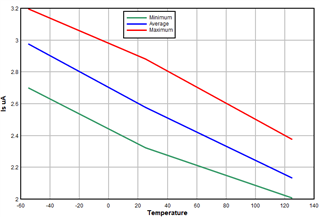The TL7700-SEP datasheet (SLVSF13A Rev August 2021) shows that the SENSE input current (Is) ranges from 1uA to 3.5uA over temperature, with a typical value of 2.5uA at 25C. That means even if I have perfect resistors in my voltage divider, Vhys will still have an error of +40%/-60% over the device's full temperature range. Is this correct? This makes it pretty hard to design something useful.
I'd like to assume that there will be a reduction in Vhys error if my environment has a narrower operating temperature than -55C to +125C, but I don't know how to determine how much. Is the relationship between Is and TA linear? I'm not seeing any characteristics graphs that show this relationship.
Thanks,
Will


